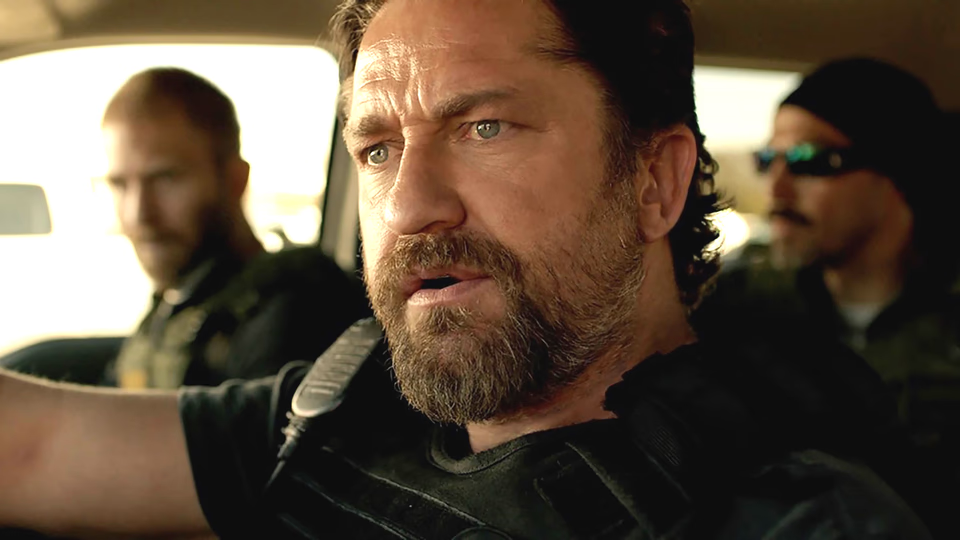Den of Thieves

There’s no escaping it: Den of Thieves—a cops and robbers saga set in Los Angeles—is derivative of Michael Mann’s Heat. It’s not as good as Heat, but that doesn’t mean it’s not entertaining.
For starters, writer-director Christian Gudegast has done his homework. Like Heat, the film opens with an armored car robbery that goes wrong. Gudegast delivers a perfect mix of voyeuristic thrills and mounting tension as we watch the thieves operate with military precision even as they hear the sirens of the police en route. The cinematography, with its mix of aerial, wide and Steadicam evokes Mann’s style but tinged with a younger sensibility.
From here, we meet the stoic head thief, played by Pablo Schreiber, and his opposite number, the head of the Los Angeles County Sheriff’s major crimes unit, played by Gerard Butler. Unlike Heat, the two aren’t positioned as co-leads, as this is more or less Butler’s movie and he stomps through it like a bull, oozing testosterone, and barely concealing a coiled rage. It’s a charismatic performance, but one that distractingly reminded me of Russell Crowe.
The other notable deviation comes from how Gudegast paints the two sides. Butler and his cops pollute crime scenes, incapacitate, kidnap, and assault a suspect, and recklessly endanger swaths of civilians. As he says, “We’re the bad guys.”
It’s a novel approach, but under-realized. For a film that borrows so heavily from Heat, it misses Mann’s central conceit of duality—that both sides are equally driven. Gudegast had an opportunity to explore this same duality in a grittier world where the cops were more corrupt than the robbers, but instead of humanizing both sides, Gudegast defaults to a reductive approach of demonizing Butler and the police. While he avoids casting the thieves as Robin Hood types, he underdevelops them. We learn little about them aside from generic bits like they were all from inner-city Los Angeles neighborhoods, and all joined the Marines special forces. Schreiber, aside from being taller than the rest, is interchangeable with his crew, which is a shame, but possibly a casualty of the film’s other big influence.
But to talk about said influence, I must venture into spoiler territory, so beware, spoilers ahead.
Gudegast’s other influence, besides Heat, was another 1995 picture, The Usual Suspects. Like that film, Den of Thieves disguises its main antagonist, which explains why Schreiber’s character is so underwritten. But The Usual Suspects leveraged Gabriel Byrne’s star status and prior filmography to pre-load his character with gravitas and recognition. Schreiber hasn’t earned that yet.
So when the reveal comes at the end, it entertains but also disappoints. Besides not holding up to introspection, this tonal diversion from crime thriller to heist caper undermines the dramatic gravitas of Butler’s role, and indeed, much of the film’s gritty realism. To be fair, the film foreshadows its tonal shift with its elaborate central robbery sequence that’s far more involved than the few-minutes long daylight bank job in Heat.
Like Heat, the central robbery ends with a shootout in the Los Angeles streets. It’s a visceral and thrilling scene, but never approaches the “you’re holding your breath and don’t realize it” level of Mann’s film, largely because we’re nowhere near as invested in the participants, because Gudegast was too enamored with his twist ending.
Thus, Den of Thieves proves a tricky recommendation. It’s not as good as either of its obvious influences, but as an imitation, it’s not bad. If you’ve seen Heat and The Usual Suspects and want more of the same—just a little looser and less polished—give it a watch. Think more David Ayer and less Michael Mann. Expect to be a little disappointed, but even more entertained.